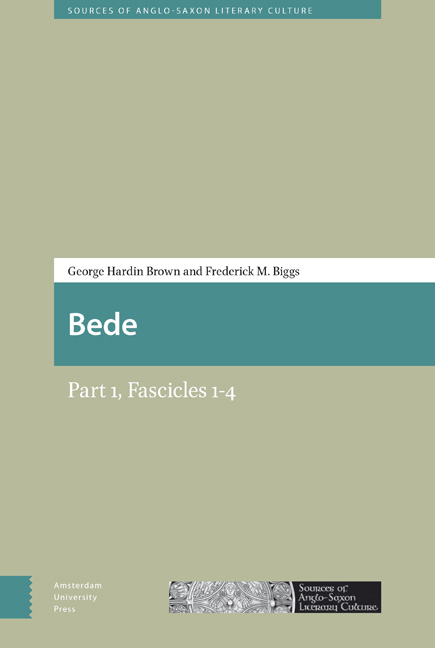Saints’ Lives
Published online by Cambridge University Press: 02 February 2021
Summary
Although the four vitae collected here make up only a small part of Bede's literary work, the lives of holy men and women played a large role in his spiritual and intellectual understanding of this world and the next, as is clear from the discussions of saints elsewhere in his writings. While Bertram Colgrave concludes his essay, “Bede's Miracle Stories,” (1935 pp 228-29) by distinguishing between “Bede, the theologian, the hagiographer, and the historian,” continuities across his writings indicate that hagiography and historiography, as well as theology, were interpenetrable members of the same subject, history's relationship to the divine. His metrical VITA CUTHBERTI, an early work that survives in both its original and a later form, shows Bede using verse to meditate on the saint's spiritual significance, lifting him out of a temporal setting. In doing so, this exercise is similar, if more developed, to his early HYMNto Athelthryth, ALMA DEUS TRINITAS QUAE SAECULA CUNCTA GUBERNAS, which he later incorporated in the HISTORIA ECCLESIASTICA GENTIS ANGLORUM(ed. Lapidge 2010 2.252-56) itself, as Colgrave elucidates in his essay, a repository of much hagiography. When Bede returned to Cuthbert later in his career, he both revised the metrical version so it could provide the basis of spiritual reflection for a friend travelling to Rome, and wrote a new prose version for Cuthbert's community at Lindisfarne, which could include more information about the saint than he had found in the anonymous vita. Similarly, in adapting, again probably early in his career, PAULINUS's verse writings on Felix of Nola in his prose VITA FELICIS, Bede provided this saint, too, with an opus geminatum, a pair of works on the same subject but written for different purposes. Bede's fourth work in this genre, the VITA ANASTASIUS, which has received less attention because it has only recently been rediscovered, provides further evidence of his interest in the genre since, as he explained in his list of works at the end of the Historia ecclesiastica, he wrote it “to clarify its meaning” (ed. 2.482; trans. Colgrave and Mynors 1969 p 571), which had been obscured by a previous translation.
- Type
- Chapter
- Information
- BedePart 1, Fascicles 1-4, pp. 263 - 301Publisher: Amsterdam University PressPrint publication year: 2017

